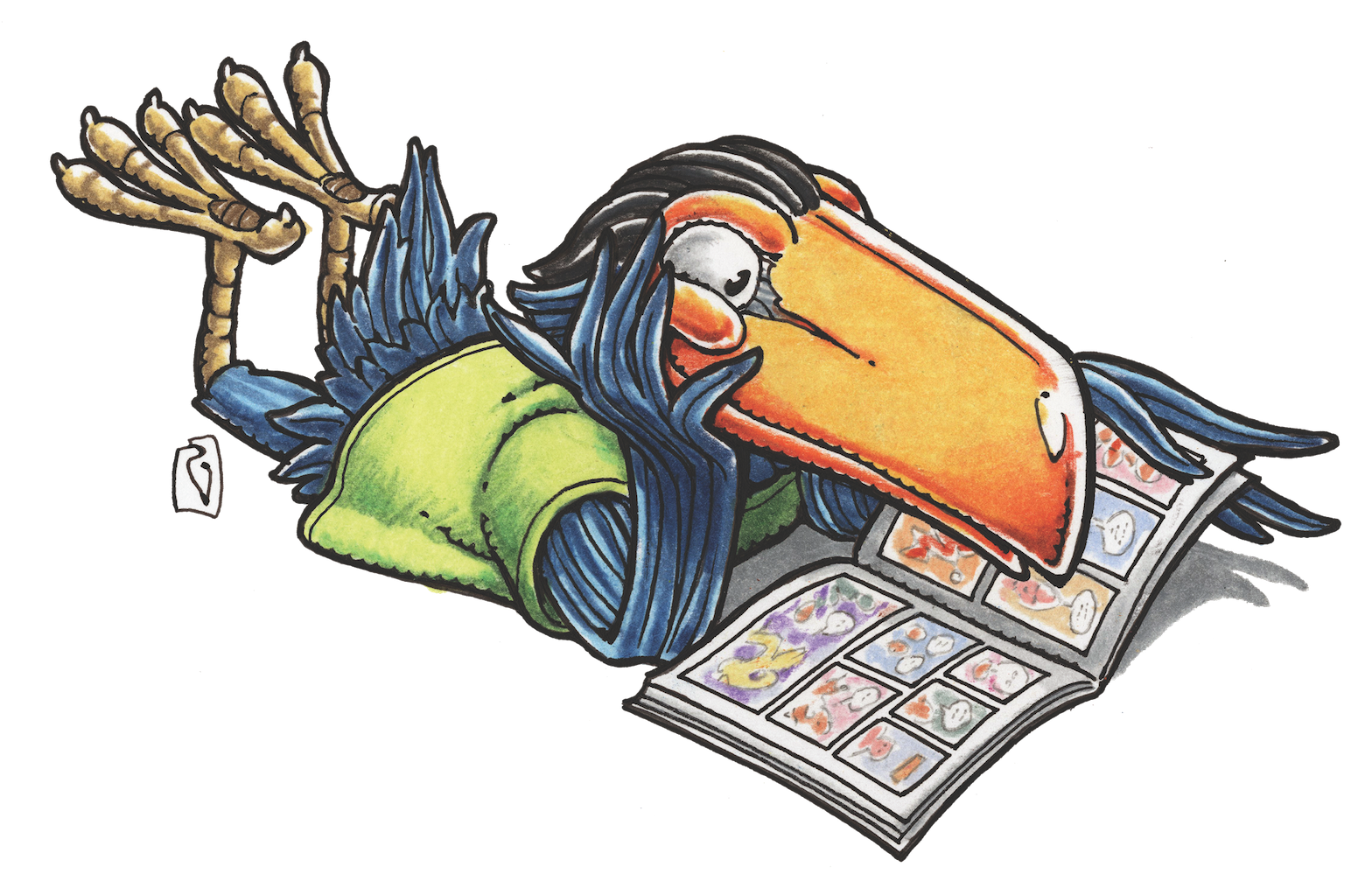STEVE LIEBER’S DILLETANTE
Dilettante 019: What Makes an Artist Say Yes to a Script?


What I describe here are choices made in ideal situations. The truth is that sometimes artists agree to draw a script for less than ideal reasons. They owe a writer a favor. They need to replace the transmission on their 2003 Toyota Corolla. They’re afraid if they say no too many times, that publisher will stop calling. For many cartoonists, particularly those who illustrate scripts someone else wrote, working in comics is a commercial art, a trade. A skilled builder might prefer to reserve his or her efforts for monumental architecture, but sometimes the only job out there is working on that new strip mall they’re putting up by the I-5 exit.
But let’s leave aside the motivations that aren’t about creative choices. When writers ask me about finding a collaborator they want to know what it is about a pitch or a script that makes an artist say yes.
The first thing I look for is how draw-able the material is for me. With my skills and weaknesses, am I going to be able to illustrate a story like this? That’s going to be different for every artist. If I have no interest in or knack for celebrity caricature, a funny GN that needs to star a bunch of recognizable celebrities would be an awful project. Every panel would be like pulling teeth, and the gags would all fall horribly flat as readers turn the book this way and that, squinting at a page trying to figure out if that’s supposed to be Tom Cruise or Chris Evans.
That said, a book that calls for a skill I don’t have can also be a plus rather than a minus. If I’m eager to improve, say, my shoddy collie skills, illustrating a long Lassie story might be just the thing.
Sometimes, a script is right in an artist’s wheelhouse. Greg Rucka’s script for Whiteout was immediately interesting to me because it called for drawing the forms and textures of nature. Even before I read the story, I could tell that I’d get to draw a lot of snow and ice, and because I’d need to find ways to give it some variety, there would be lots of opportunities to play with the sort of eccentric mark-making that filled my sketchbooks. It also helped that he wanted the lead character to be attractive for her sturdy competence rather than for having the usual comics heroine physique.
What else makes a story draw-able versus not draw-able? The time it takes to draw something. One of the big things artists look for in a script is how aware the writer is that someone will have to draw this story on a deadline. Do scenes take place in difficult-to-draw settings or situations for a good reason? Did that six-page expository dialogue scene need to take place in a classroom filled with seated sixth-graders? If the scene doesn’t make significant use of the fact that the kids are all lined up in rows, folded into those oddly shaped desks, I’d wonder why the writer didn’t choose to have that conversation take place during recess instead. And does the story really require the artist to draw a crowd of rioters inside the bicycle factory from overhead in every panel of this page? Is the writer adding long hours to the artist’s workload for a good reason, or just because he or she doesn’t know better? (It can be tough for an inexperienced writer to intuit what’s difficult to draw, which is one reason why artists tend to prefer working with experienced writers.)
An artist who is focused on storytelling is going to be looking to see if the writer has a solid grasp of what a story requires. Do things happen in the story for a good reason? Do the characters have identifiable goals to motivate their actions? Does the script establish obstacles for them to overcome, and stakes if they fail to do so? Do scenes end in failure, motivating the character to find a new goal? If a script doesn’t show a clear mastery of the basics, it tells the artist that the burden of making a clear story is going to fall in his or her lap.
Artists also look to see if the writer is fluent in comics. Does the script make the classic mistake of calling for multiple actions in a single panel? I can draw Bob getting a can of soup from the cupboard, and I can draw Bob enjoying a bowl of soup, but that’s at least two panels. If I see a script that says:
PANEL ONE: Bob gets a can of chicken noodle soup from the cupboard and happily spoons away at the steaming bowl.
I know I’m dealing with a comics amateur. There might be other aspects of the script that are so good, I’m willing to forgive a fundamental misunderstanding of how the medium works, but it’d definitely cost them a few points.
If a writer wants to (or knows he or she is going to) work with a specific artist, it’s a great idea to talk to that artist before writing the script, to find out what her collaborator’s preferences are. Some artists like drawing lots of tiny panels on a page, with simple drawings emphasizing moment-to-moment changes over bigger, detailed panels that stand in for longer stretches of time. (I’m one of them!) Other artists have an absolute maximum number of panels they’re willing to draw on a page. Some artists love doing historical research and live to fill their panels with evidence they’ve done their work. Others get very creative with framing and silhouetting as they try to avoid drawing any thing they can’t pull out of their head. Some seek out opportunities to closely observe the tiny gestures that can bring an illustrated conversation to life. Others would rather take a bullet than draw three pages of talking heads. Knowing the artist’s tastes will make it a lot likelier they’ll say yes.
Projecting that you’re a good collaborator is enormously important. Let the artist know that what your goals are for a scene, and that if they have a better solution for achieving those goals, you’d love to hear them! No one wants to feel like a hired hand.
None of this guarantees that an artist will say yes. Sometimes they’re just committed for the next three years, or they’ve decided to write their own stories, or they absolutely don’t want to work with anyone whose name contains vowels. It isn’t always going to be in your control, so don’t take it personally if it takes a while to find the right match for your script.
Good luck! Have you had experience getting people to illustrate your scripts? Do you have opinions about what you will and won’t draw? Tell me about them on Twitter at @steve_lieber, or on Facebook at www.facebook.com/steve.lieber.
Steve Lieber’s Dilletante appears the second Tuesday of every month here on Toucan!